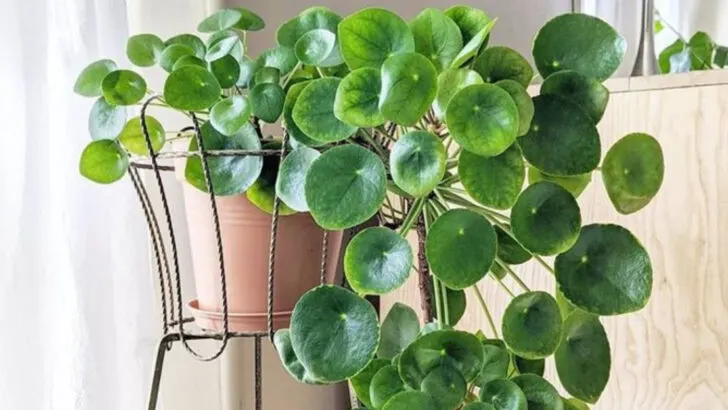Some plants are so stunning, sculptural, and flawless that they stop people in their tracks. At Plantisima, we’re all about that moment when a guest leans in and asks, “Wait… is that real?” These plants blur the line between nature and art, bringing effortless elegance and visual drama into any space.
In this article, we highlight 15 show-stopping houseplants that look too perfect to be real—but absolutely are. From waxy leaves to surreal patterns and unexpected shapes, these plants are guaranteed to spark conversation and admiration from anyone who walks through your door.
To our Plantisima readers who love plants that double as decor—this list is your design dream come true. These botanical beauties don’t just elevate your space—they make it unforgettable.
Lithops
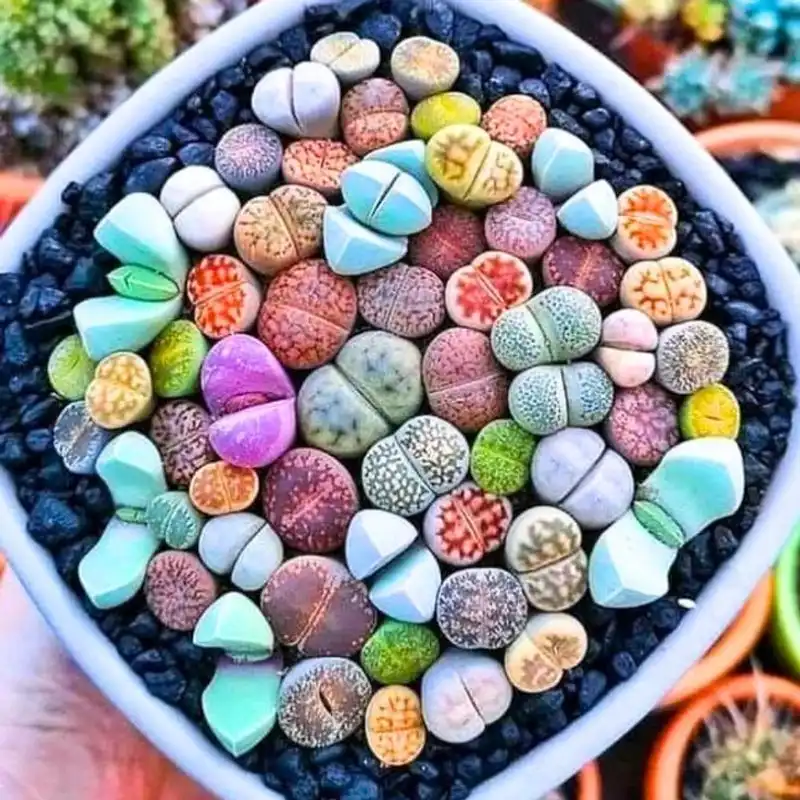
Imagine pebbles that spring to life. Known as Living Stones, Lithops are succulent plants that mimic the appearance of stones or pebbles. Their unusual shape and the way they blend into their surroundings are fascinating, often requiring a second look to discern their true nature. Native to the deserts of southern Africa, these plants have adapted to survive in harsh conditions, making them incredibly resilient. Their ability to thrive with minimal water makes them a perfect low-maintenance choice for plant enthusiasts.
Venus Flytrap
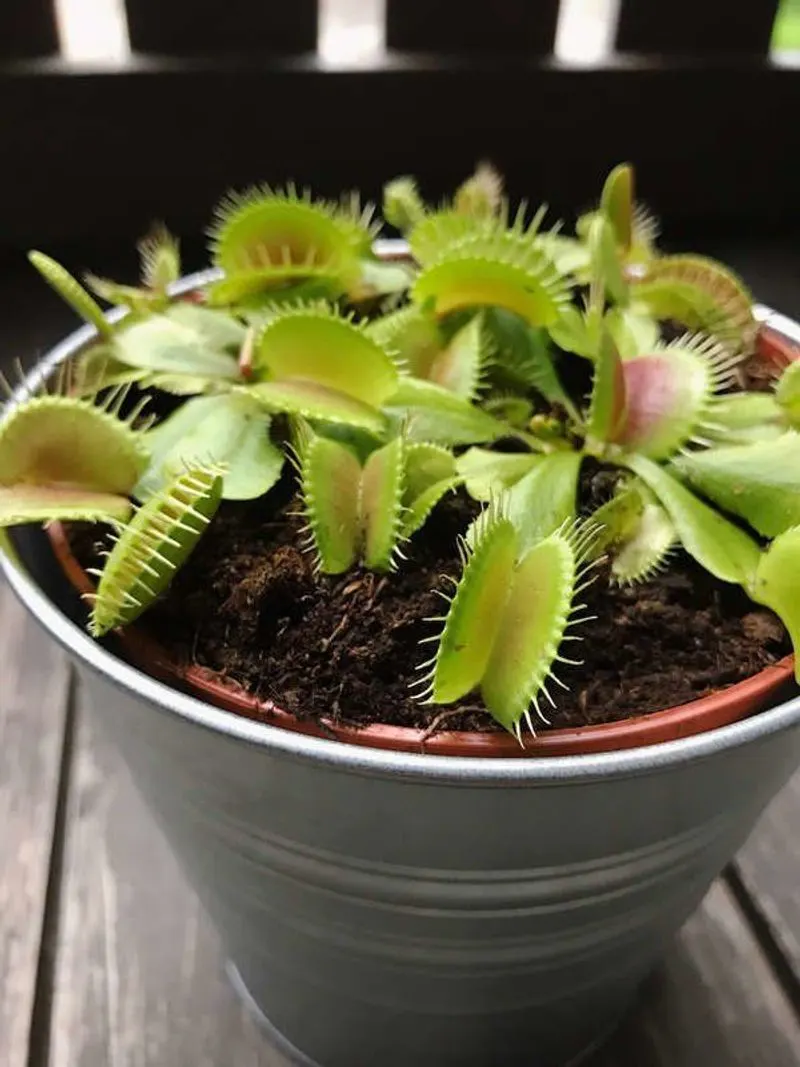
Not just any ordinary plant, the Venus Flytrap is a captivating carnivore. Its jaw-like leaves snap shut with surprising speed, trapping unsuspecting insects. Native to the subtropical wetlands of the East Coast of the United States, this plant is an evolutionary marvel. Its ability to capture prey compensates for the nutrient-poor soil in its native habitat. The drama of its capture mechanism turns it into a fascinating spectacle for observers.
Mimosa Pudica
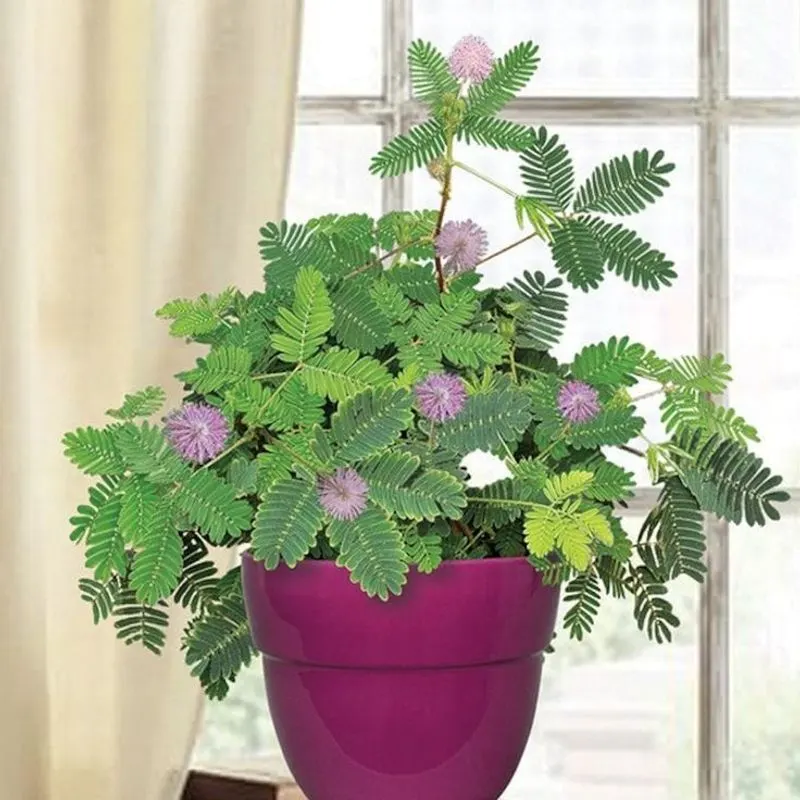
Touch it, and it moves! The Mimosa Pudica, or the “Sensitive Plant,” responds to touch by folding its leaves, a defense mechanism against predators. This rapid movement adds an interactive element to any plant collection. Originating from South America and Central America, it’s a delight for children and adults alike, turning plant care into a playful experience.
Staghorn Fern
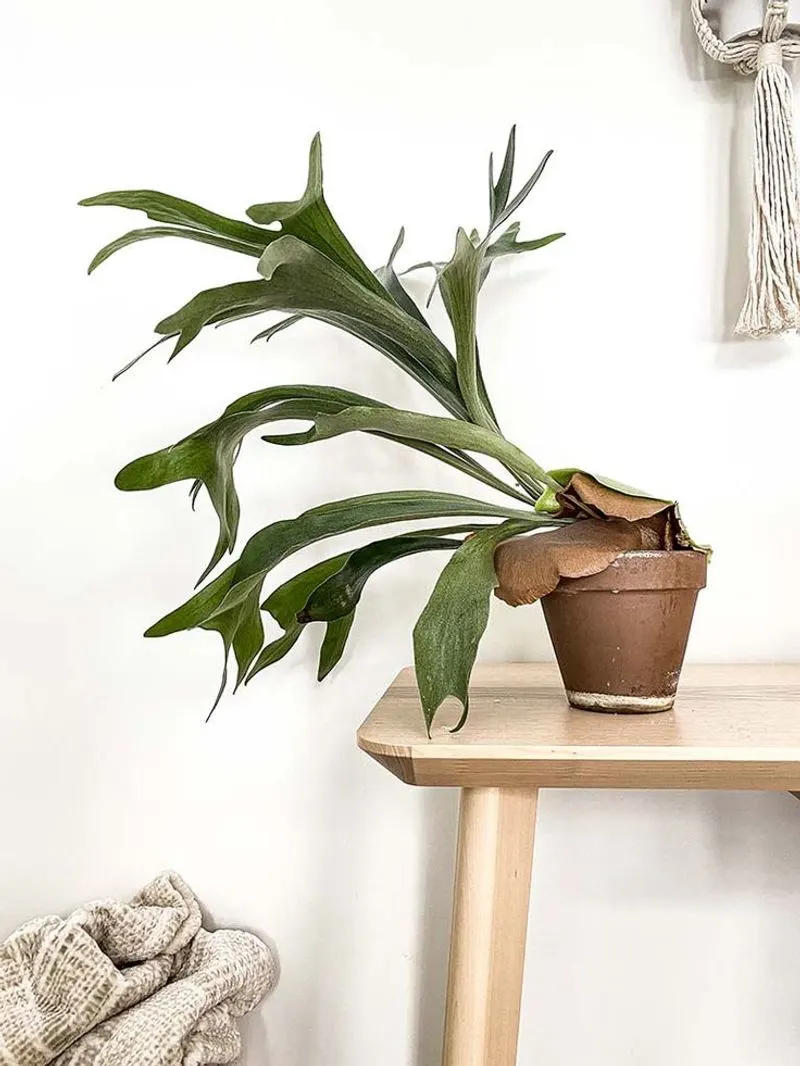
Resembling the majestic antlers of a stag, the Staghorn Fern is a true piece of living art. Its fronds grow in unique patterns, making it an excellent choice for wall mounting. These ferns are epiphytes, thriving on other plants without drawing nutrients from them. Found in tropical rainforests, they capture nutrients from the air and rain. Their captivating form makes them a standout feature in any space.
String of Pearls
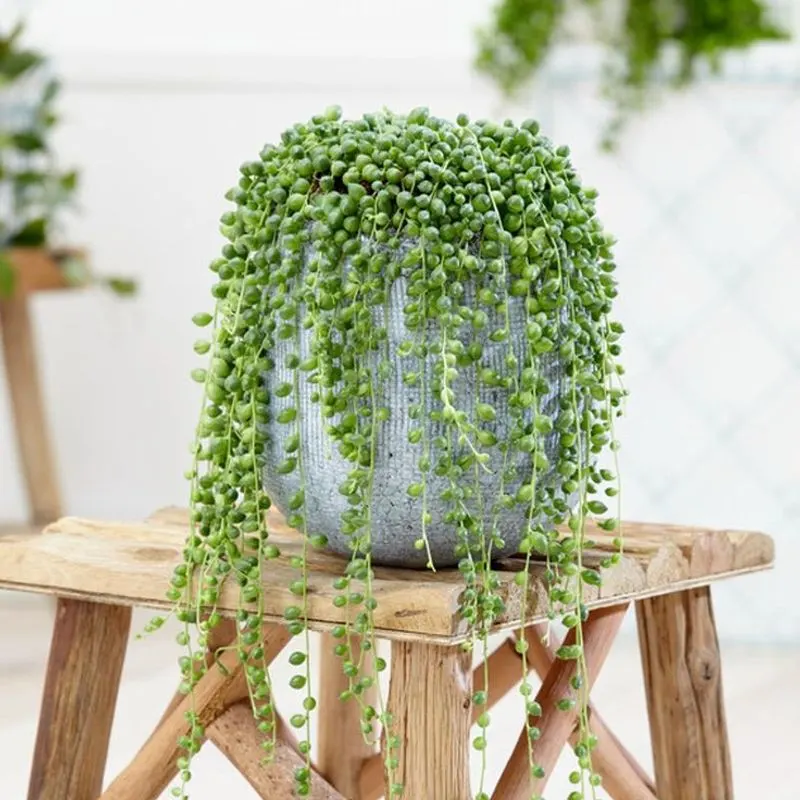
A cascade of green pearls; the String of Pearls is a succulent that charms with its unique bead-like foliage. Its trailing stems make it perfect for hanging baskets or shelves. Originating from the dry regions of southwest Africa, it thrives in bright light and well-draining soil. This whimsical plant adds a touch of elegance and intrigue to any space, often prompting questions about its care and origin.
Air Plant
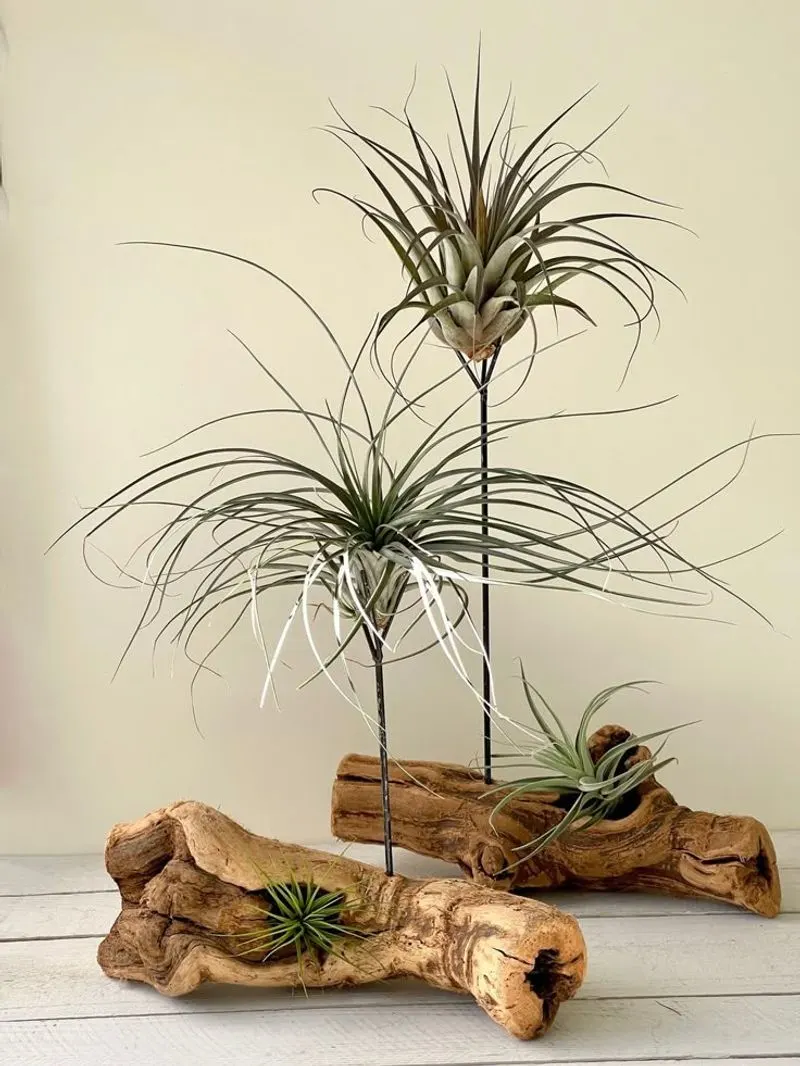
All it needs is air! Air Plants, or Tillandsias, don’t require any soil, making them incredibly versatile for creative displays. They absorb moisture and nutrients through their leaves, thriving in various environments. Native to the forests, mountains, and deserts of Central and South America, their low-maintenance nature has made them popular in modern home decor. Their ability to survive with minimal care is truly astonishing.
Zebra Plant
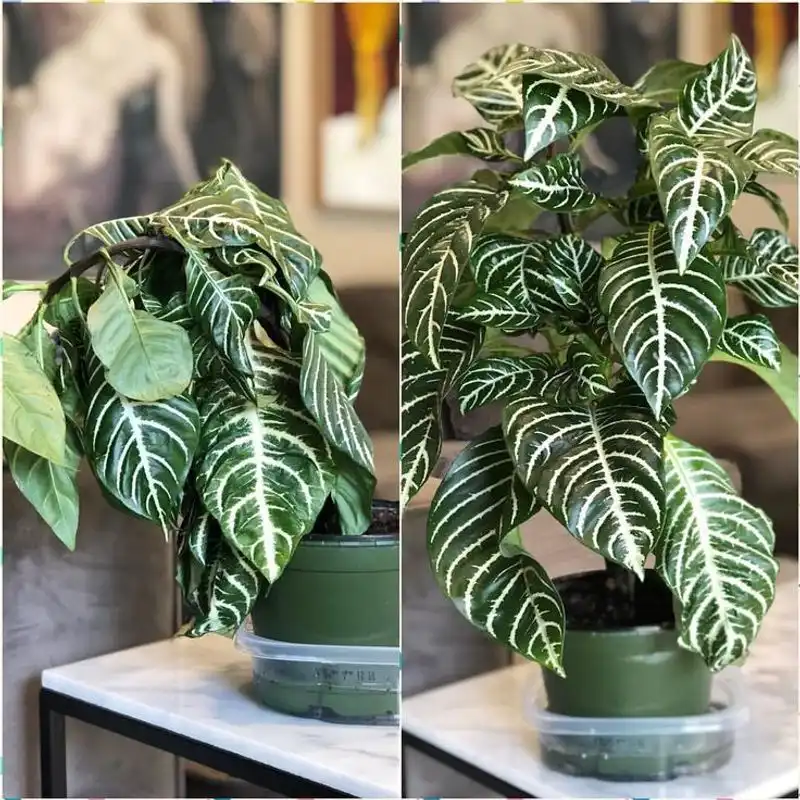
Striking stripes adorn the Zebra Plant, known for its dark green leaves with bold, white veins. Native to Brazil, this plant thrives in humid environments with indirect light. Its flowers, although rare, are bright yellow and dramatic. The Zebra Plant’s unique foliage makes it a popular choice for adding a touch of pattern and contrast to interior spaces.
Fiddle Leaf Fig
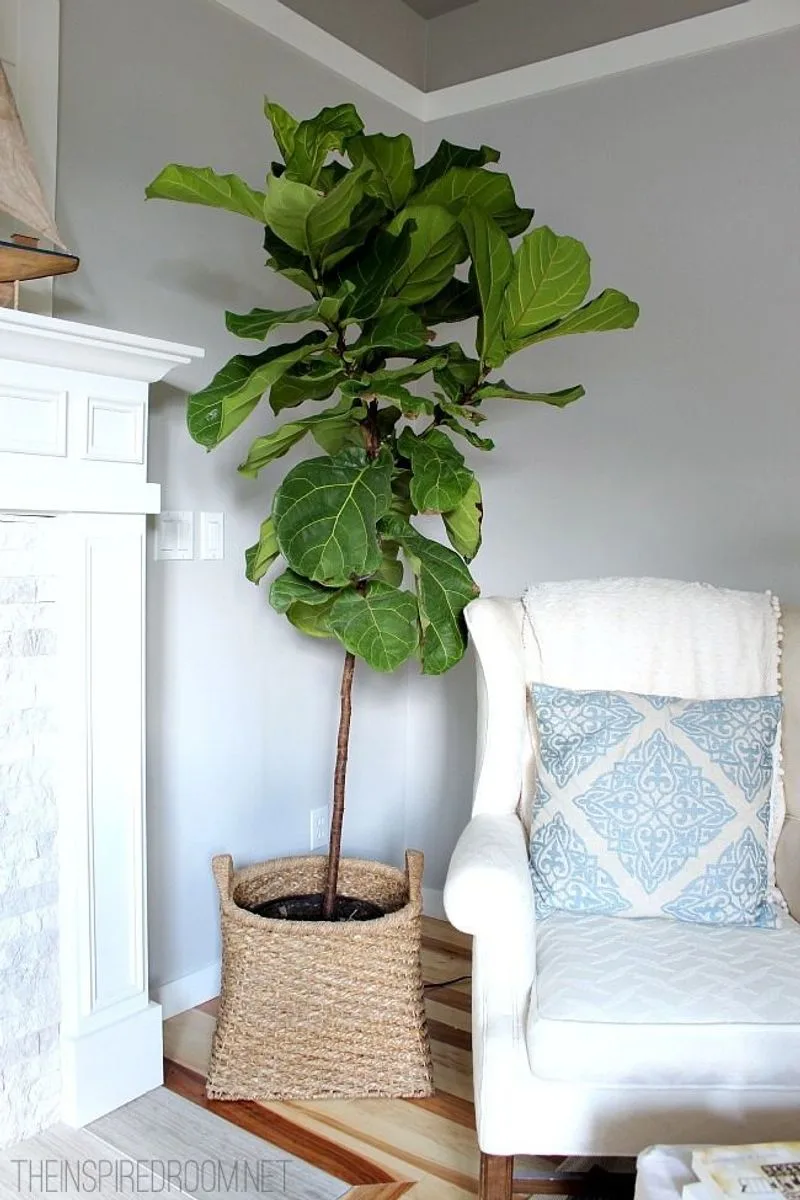
With leaves as big as its name, the Fiddle Leaf Fig is a dramatic statement piece. Its large, fiddle-shaped leaves command attention, making it a favorite in interior design. Native to the tropical rainforests of West Africa, it requires bright, filtered light to thrive. Its imposing form and striking foliage make it a true centerpiece in any room.
Bird of Paradise
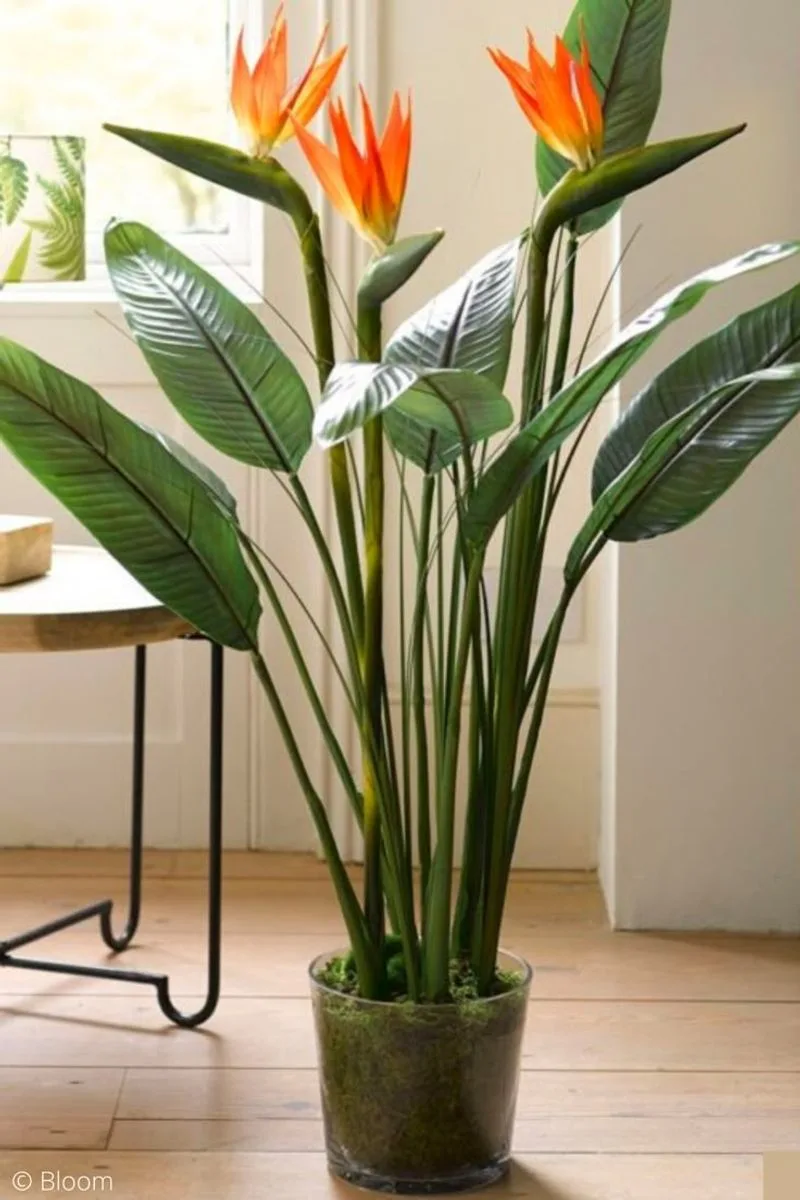
Exuding tropical flair, the Bird of Paradise captivates with its bold flowers. Resembling a bird in flight, its vibrant orange and blue petals are a visual feast. Native to South Africa, it thrives in bright, direct sunlight. This striking plant adds a splash of color and elegance to any setting, making it a conversation starter.
Rex Begonia
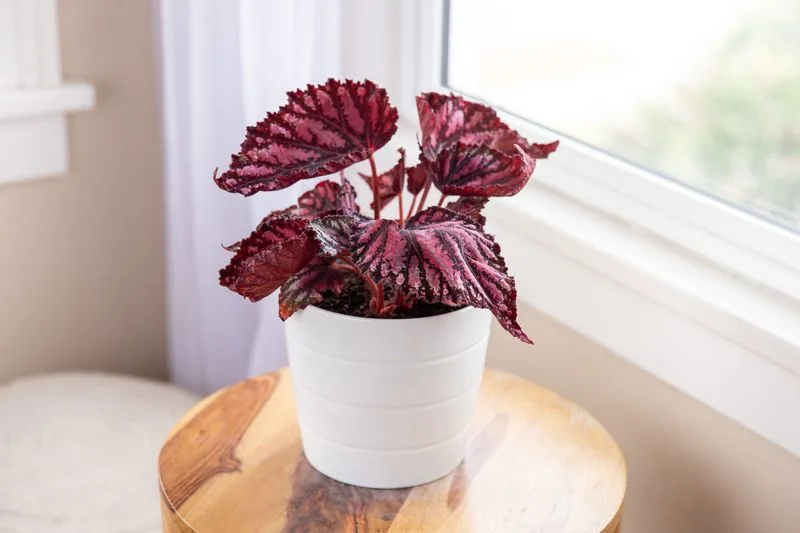
A riot of colors and patterns, Rex Begonia is a visual delight. Its leaves boast a kaleidoscope of designs, from swirling patterns to bold stripes. Native to the tropical and subtropical regions of Central and South America, it prefers humid conditions and indirect light. This plant’s vibrant foliage makes it a standout choice for adding texture and color to your decor.
Alocasia Polly
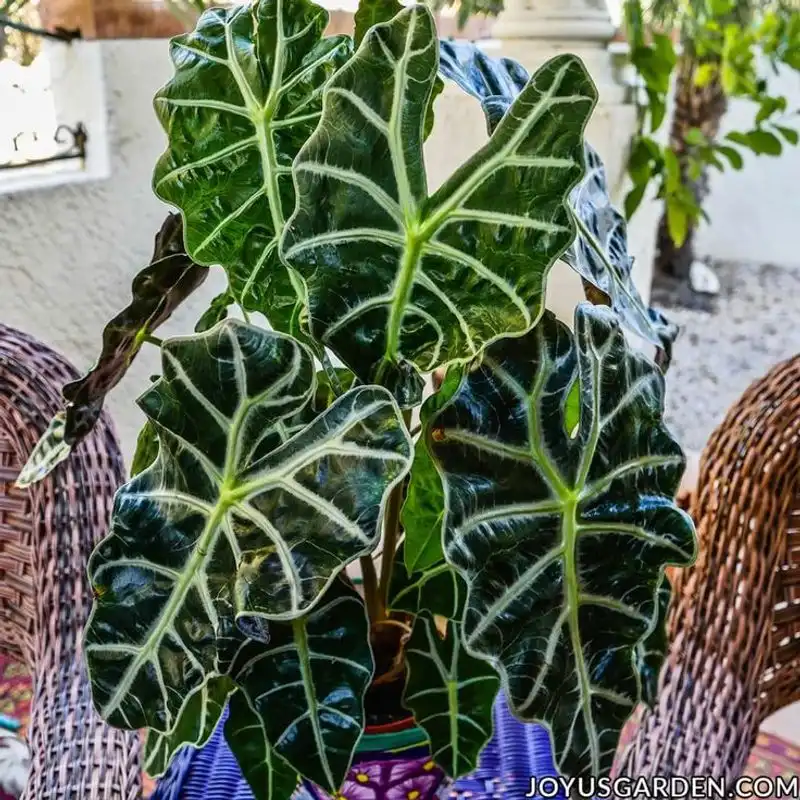
With leaves that resemble a luscious jungle canopy, Alocasia Polly is an exotic beauty. Its arrow-shaped leaves are glossy and ribbed, creating a striking silhouette. Originating from the rainforests of Southeast Asia, it thrives in warm, humid conditions. The dramatic foliage of Alocasia Polly adds an element of intrigue and luxury to any space.
Chinese Money Plant
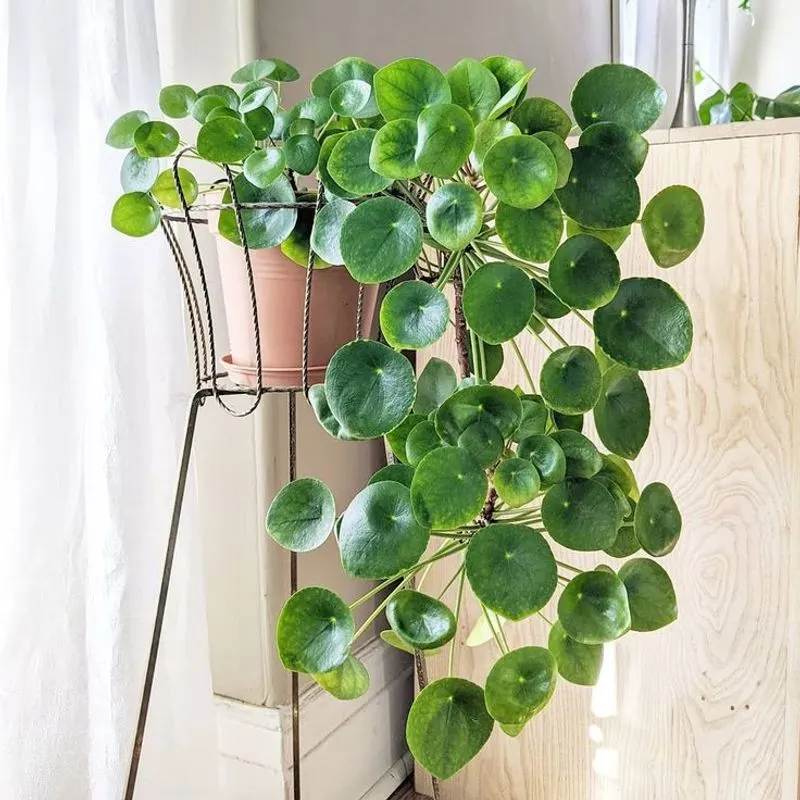
Considered a symbol of good fortune, the Chinese Money Plant is adored for its charming, coin-shaped leaves. This plant, native to the Yunnan Province of China, prefers bright, indirect light. Its easy care requirements and unique appearance make it a popular choice for bringing a touch of prosperity and style into homes.
Pitcher Plant
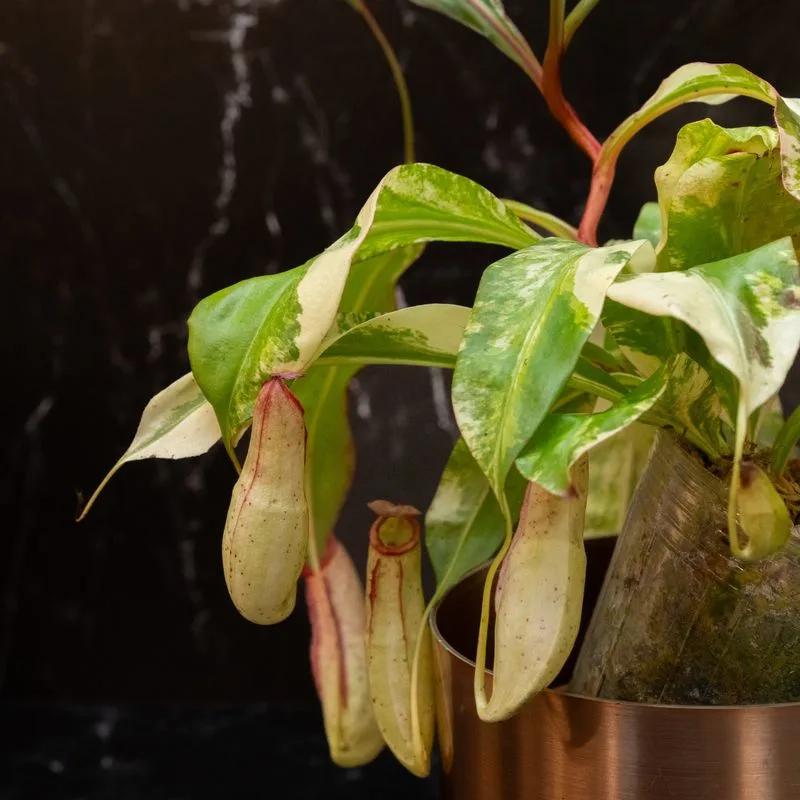
Nature’s own bug catcher, the Pitcher Plant lures insects into its tubular traps. These plants, native to various climates worldwide, are a marvel of evolution. They thrive in nutrient-poor soils by obtaining nutrients from their prey. The intricate design of their pitchers not only serves a functional purpose but also adds an exotic allure to any collection.
Swiss Cheese Plant
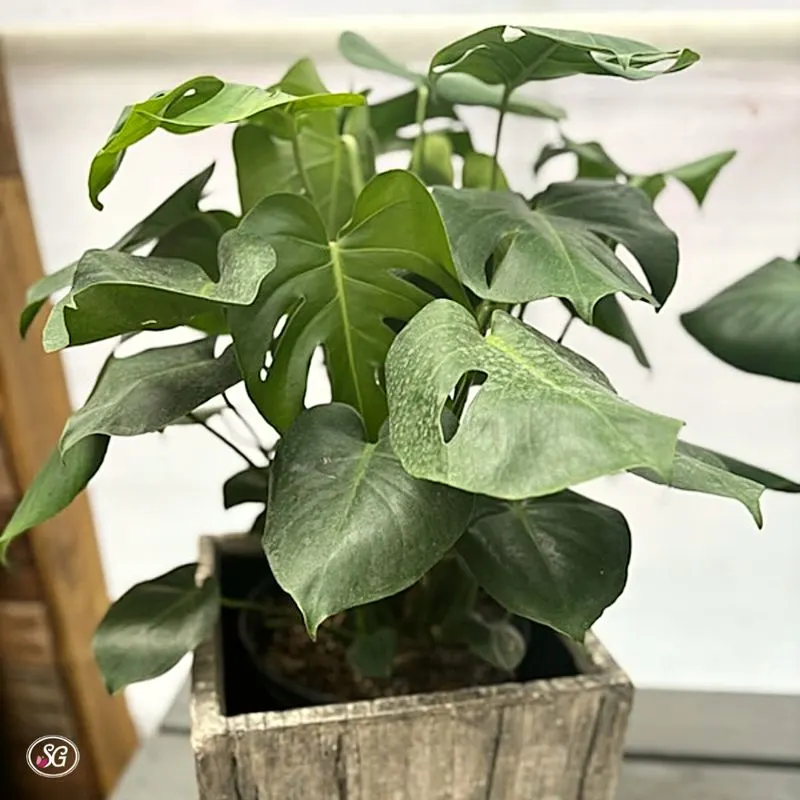
Famous for its iconic split leaves, the Swiss Cheese Plant is a bold addition to any decor. Its large, fenestrated leaves create an eye-catching display, earning it a place in many homes. Native to the tropical forests of southern Mexico, it thrives in bright, indirect light. This plant’s unique appearance makes it a popular choice among plant enthusiasts.
Peacock Plant
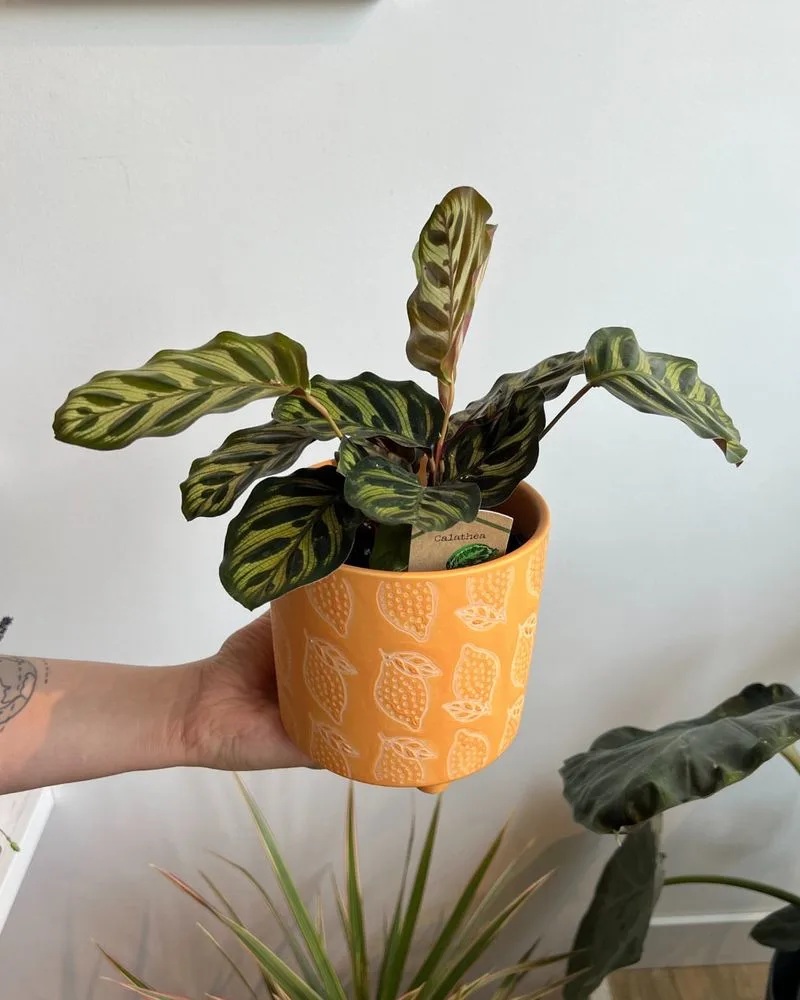
Resembling the plumage of a peacock, the Peacock Plant’s leaves are a true spectacle. Its striking patterns and colors are a testament to the beauty of natural design. Originating from the rainforests of Brazil, it thrives in high humidity and indirect light. The Peacock Plant’s vibrant foliage adds a touch of drama and elegance to any indoor space.

